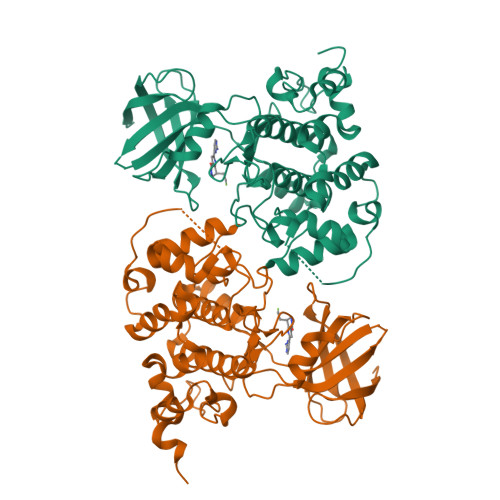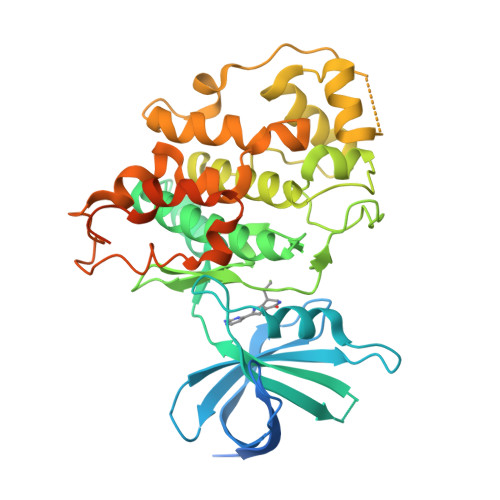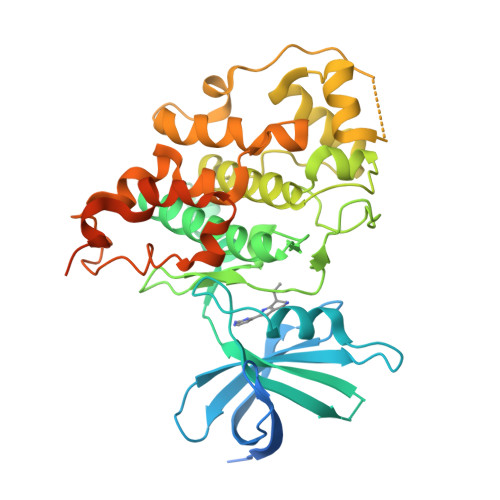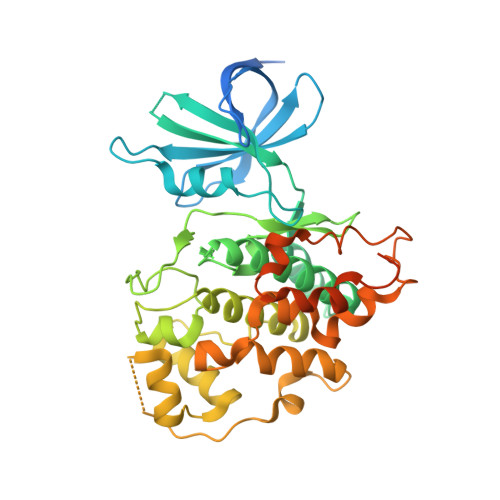First Cdc7 kinase inhibitors: pyrrolopyridinones as potent and orally active antitumor agents. 2. Lead discovery.
Menichincheri, M., Bargiotti, A., Berthelsen, J., Bertrand, J.A., Bossi, R., Ciavolella, A., Cirla, A., Cristiani, C., Croci, V., D'Alessio, R., Fasolini, M., Fiorentini, F., Forte, B., Isacchi, A., Martina, K., Molinari, A., Montagnoli, A., Orsini, P., Orzi, F., Pesenti, E., Pezzetta, D., Pillan, A., Poggesi, I., Roletto, F., Scolaro, A., Tato, M., Tibolla, M., Valsasina, B., Varasi, M., Volpi, D., Santocanale, C., Vanotti, E.(2009) J Med Chem 52: 293-307
- PubMed: 19115845
- DOI: https://doi.org/10.1021/jm800977q
- Primary Citation of Related Structures:
3DU8 - PubMed Abstract:
Cdc7 kinase is a key regulator of the S-phase of the cell cycle, known to promote the activation of DNA replication origins in eukaryotic organisms. Cdc7 inhibition can cause tumor-cell death in a p53-independent manner, supporting the rationale for developing Cdc7 inhibitors for the treatment of cancer. In this paper, we conclude the structure-activity relationships study of the 2-heteroaryl-pyrrolopyridinone class of compounds that display potent inhibitory activity against Cdc7 kinase. Furthermore, we also describe the discovery of 89S, [(S)-2-(2-aminopyrimidin-4-yl)-7-(2-fluoro-ethyl)-1,5,6,7-tetrahydropyrrolo[3,2-c]pyridin-4-one], as a potent ATP mimetic inhibitor of Cdc7. Compound 89S has a Ki value of 0.5 nM, inhibits cell proliferation of different tumor cell lines with an IC50 in the submicromolar range, and exhibits in vivo tumor growth inhibition of 68% in the A2780 xenograft model.
Organizational Affiliation:
Nerviano Medical Sciences Srl, Viale Pasteur 10, 20014 Nerviano, Milano, Italy.


















